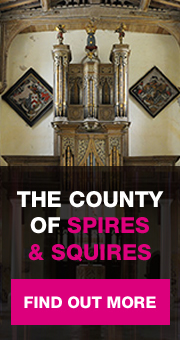The village gained it’s aristocratic name by virtue of its late Saxon owner Waltheof who married William the Conqueror’s niece Judith and was created 1st Earl of Northampton.
His land holding were centred on the village and still today, the church tower remains as it would have been in his childhood. It is a very rare survival from the late 10th, early 11th century.
His castle stood adjacent to the church and its motte is still partly visible today in the church yard. What draws a visitor here today is still that tower which stands unbuttressed rising five storeys. Each storey is stepped in (a style of architecture more familiar in the work of Lutyens).
The tower seems to grow out of the ground and the ribs that rise through it’s different stages add to its feeling of height. On the second stage are a series of stone loops and on the third criss crosses in stone that seem to emulate a wooden structure.
The whole is pierced by oddly placed windows and at the top this takes the form of an open arcade in a rather dumpy Romanesque style. The rest of the church is Norman allbeit re modelled in the 13th / 14th centuries. Apart from an Elizabethan pulpit it wasn't until the 19th / 20th century that the church was significantly changed – Minton tiles to the design of Lord Northampton’s brother, Lord Alwynne Compton (1875), stained glass windows, and a screen with painted panels by Henry Bird (1935).
Please refer to the Glossary for any terms in the text that you are unfamiliar with.







